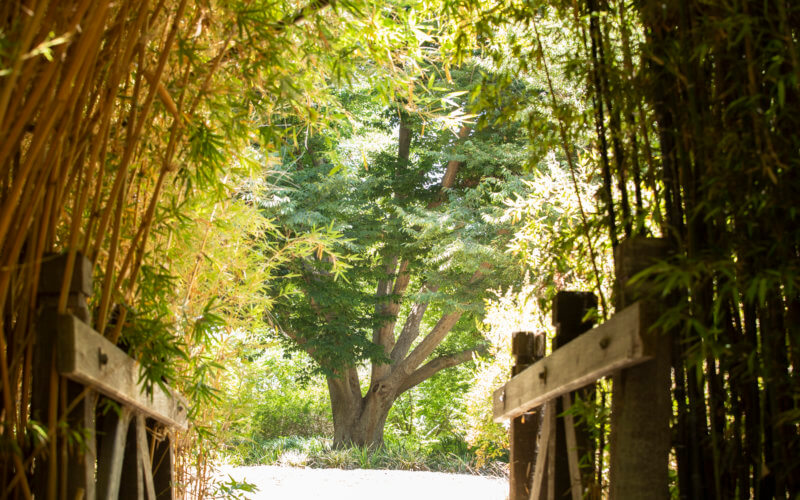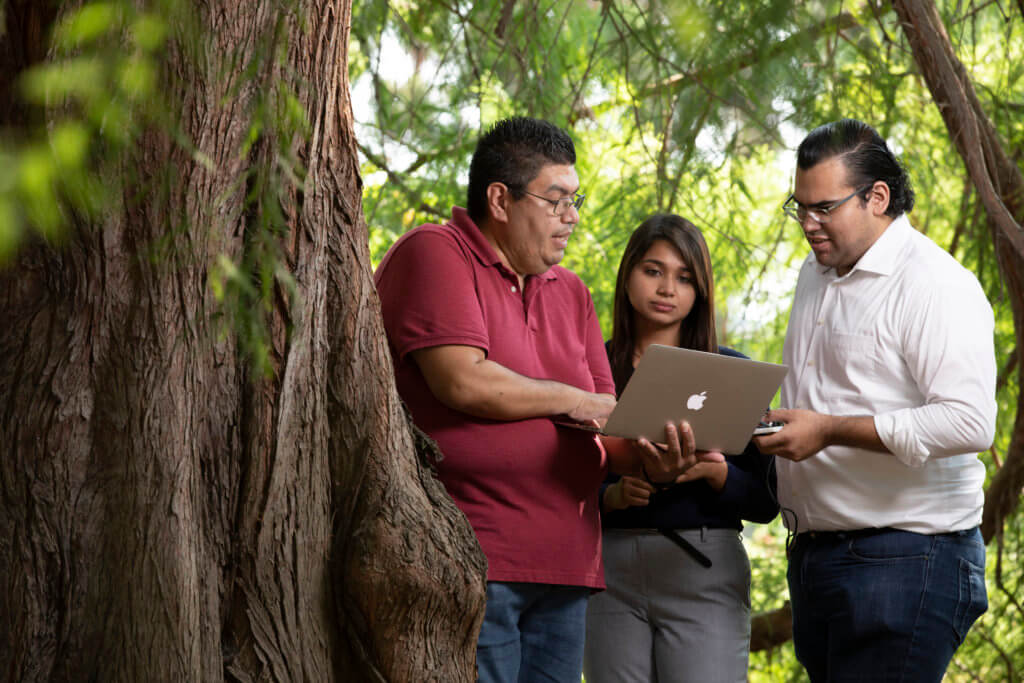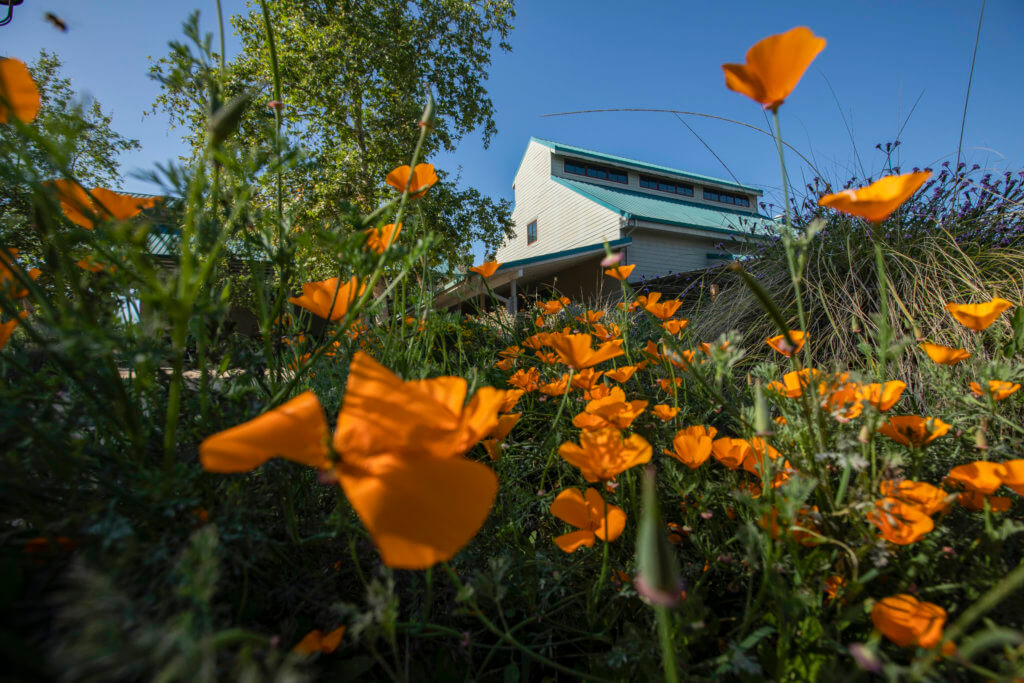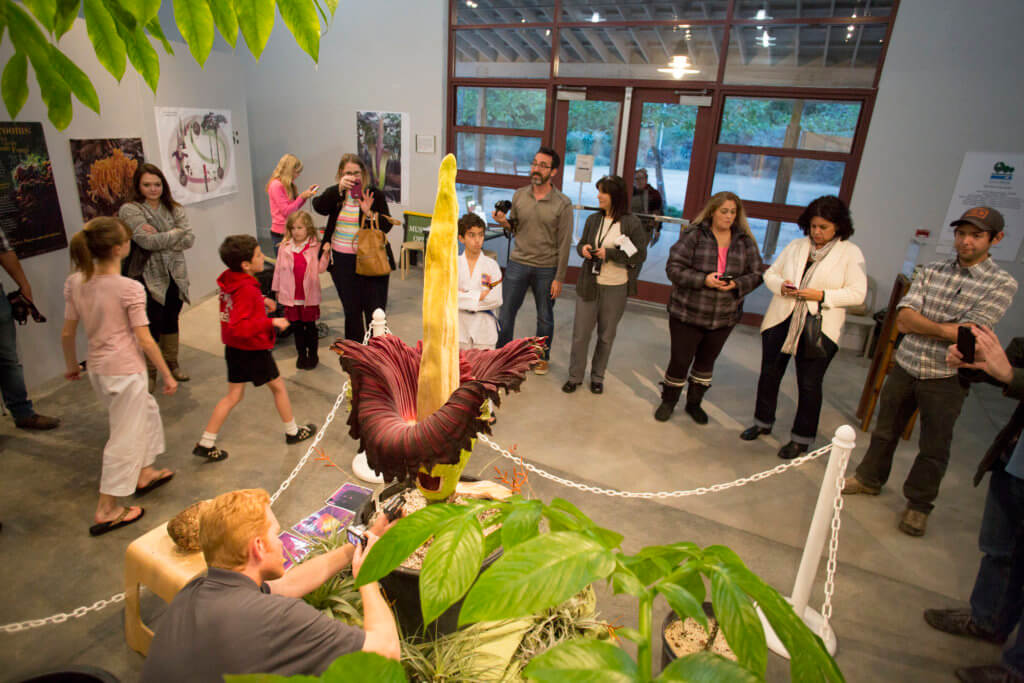
After nearly 45 years since the arboretum officially opened at the north end of Cal State Fullerton’s campus, the 26-acre botanical garden has a new name.
The CSUF-owned arboretum was renamed the Arboretum and Botanical Garden at Cal State Fullerton to reflect the university’s educational, research and environmental mission.
With a collection of living and historical plants from around the world, the renaming demonstrates the botanical garden’s key role of teaching and learning while broadening its reach throughout Southern California, the nation and the world.
“The arboretum and botanical garden fits our mission like a glove. It engages the broader community and is the laboratory for experiential learning and research by our faculty and students,” said Eileen Walsh, associate vice president for academic programs.

Academic Programs now oversees the arboretum and botanical garden to foster alignment between research opportunities, enhanced academic curricula and internships with the university’s eight colleges.
“One reason to bring the arboretum under Academic Programs is to strengthen and expand the number of research projects for students and faculty,” Walsh added. “We envision more internships, more classes conducted in the space and more faculty involvement in developing research.
“Whether engineering projects, biological experiments or field trips planned by students in our teacher education program, we aim to align the outdoor space with expanded experiential learning.”
Arboretum officials surveyed campus and community members to solicit feedback for the name change. Results showed a preference to include “botanical garden,” with over half of the respondents favoring the new name.
“It was essential to ensure that we collected input from a diverse and broad range of stakeholders from the university, the community and beyond,” said Debra Leahy, associate vice president for international programs, who formerly oversaw arboretum operations.
“Throughout the process, the arboretum director and team gained feedback from Friends of the Fullerton Arboretum and other constituents for whom the arboretum holds a special place.”

The name change will also help the broader community understand that the arboretum is part of the university and not a separate entity, Leahy said.
“Aligning the name of the arboretum directly with the university allows us to depict the educational impact it has on CSUF’s academic mission and forward-looking strategy,” she said.
Leahy added that it is critical that as a living, outdoor laboratory, the arboretum supports and transforms learning for college students and community children and adults.
“With the name refresh, we hope to garner broader understanding and engagement since some people may have more familiarity with a botanical garden,” Leahy said. “With this addition, visitors will have a deeper view of the beauty, educational touchpoints and environmental stewardship.”

The university’s arboretum and botanical garden is one of 43 in the world — including one of three in California and one of only seven university arboreta — awarded a Level IV accreditation for its plant collection and educational value. This accolade is the highest level awarded by ArbNet, an organization that recognizes arboreta from around the globe at various levels of development, capacity and professionalism.
The Arboretum and Botanical Garden at Cal State Fullerton is home to many rare, threatened and endangered plants, specimens collected from the wild and cultivars of historical significance, including a nationally recognized citrus collection. The nursery propagates many of these plants to make them available to other institutions worldwide and the public through plant sales.
In the fall of 1970, faculty members and students began to sow the idea of the arboretum on a parcel that once was an abandoned orange grove.
By the mid-1970s, university and community members rallied to build the arboretum, with the official public opening and ribbon-cutting ceremony held on Oct. 21, 1979. A fall celebration is being planned to celebrate the arboretum’s 45th anniversary.
Over the decades, the arboretum and botanical garden became a partnership between Cal State Fullerton, the City of Fullerton and Friends of the Fullerton Arboretum — volunteers who support fundraising, education, plant sales and events. Fullerton’s support, funded by the city’s Redevelopment Agency since 1976, ended in December 2020.
“We hope the new name will give recognition to the Friends of the Fullerton Arboretum who have such a vital role in the operations and funding of this jewel,” Walsh said.